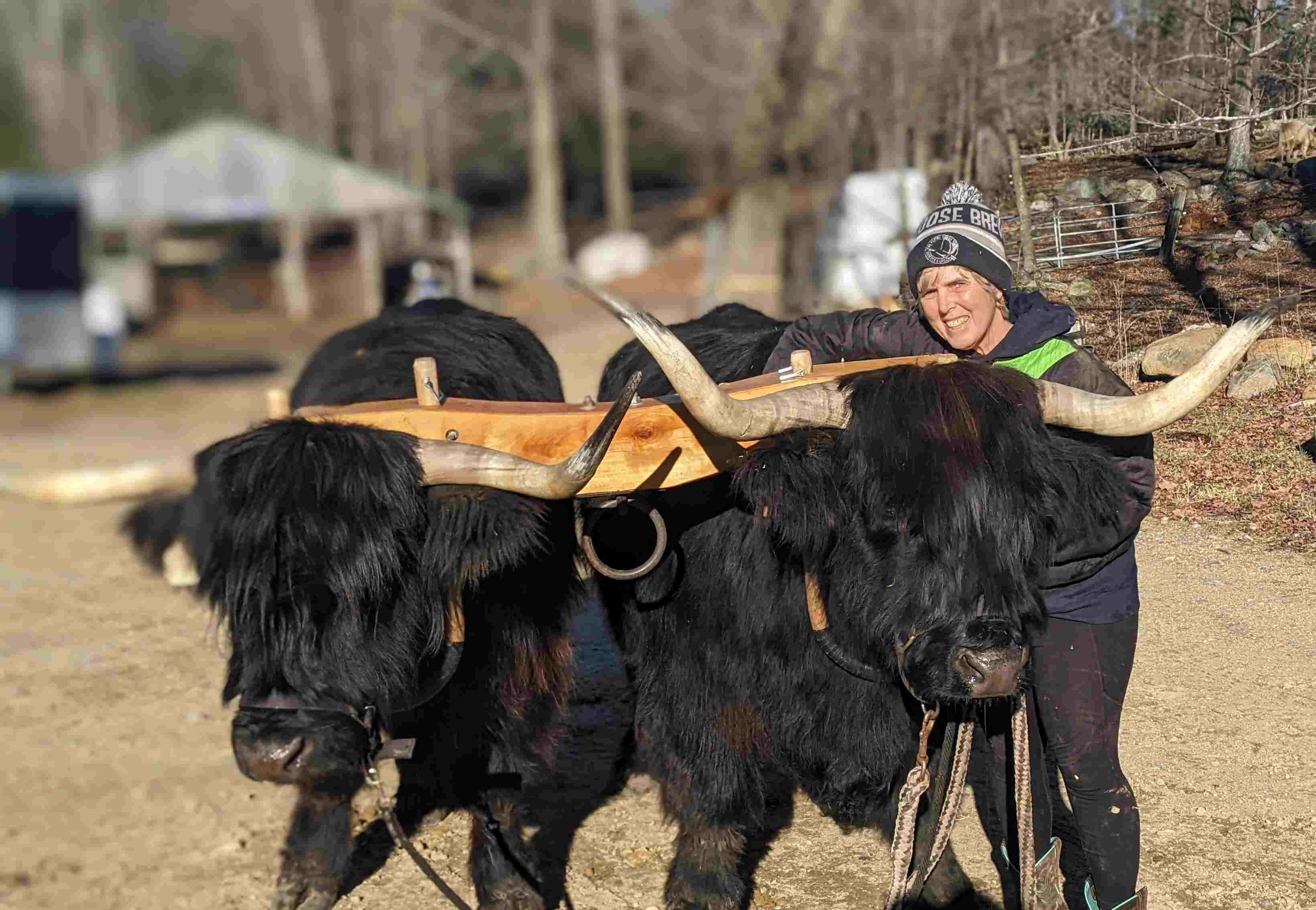How to Speak to Horses and Cows
posted on
July 27, 2020

Notice where Belle, a Milking Short Horn heifer, is pointing her ears? They are forward, so the camera has her full attention. If one ear were back and the other forward, she would be paying half-attention.
About halfway through the trail ride, Sally said, "This horse won't stay on the path." Sally is a 21-year-old college student who had paid me for an hour horseback ride on a Class-6 road through the woods. Sally was riding a gelding named Danny, who liked to walk on the edges of the trail. I had ridden him and knew that he would do exactly what I asked. If I wanted him to walk up a set of stairs, he would. Without rider guidance, Danny would follow his drummer and wander to the edge of the trail.
Guidance means using the reins to steer and squeeze with one leg or another to encourage the horse to move in the desired direction. Sometimes a light tap with a riding crop (a short stick the rider holds) helps reinforce a command. Sally needed to demonstrate better guidance to keep Danny on the trail.
Steering a horse matters, but where you look also makes a difference. Look at the ground, and you are likely to end up there. Set your sights on the middle of the trail and the horse will likely go there. Driving instructors give similar advice: Look at the shoulder of the road, and you'll end up in a ditch. Look in the middle of the lane, and you stay on the road.
It's also possible for an equestrian to prevent delinquent behavior. For instance, Chester, a 16-year-old pony, must think he is starving because when on the trail, he will reach down and grab a mouthful of grass or snatch a maple leaf as he walks. How to prevent this behavior? Horse mind reading. It's not complicated. Horses "look with their ears." If you are in the saddle and your horse swivels his ears in your direction, he is paying attention to you. Ears perked forward means he is ignoring you and paying attention to what's in front. Watch a horse's ears, and if one ear swivels toward a maple leaf, his nose and mouth will follow shortly. Correct him before he reaches for the foliage, and he'll think you are a mind reader.
A cow's ears work the same way. The ears address whatever has her attention.
This works with people, too, except that we can't swivel our ears (most of us anyway). Body language replaces ears for people. When the distancing is over, and you find yourself chatting with someone at a social event, notice his or her feet. Are they pointed toward or away from you? Pointed toward you means: I want to hear what you have to say. Pointed anywhere else, and that person is getting ready to flee the conversation. Corrections can be made with a riding crop, but you might not get invited back.



